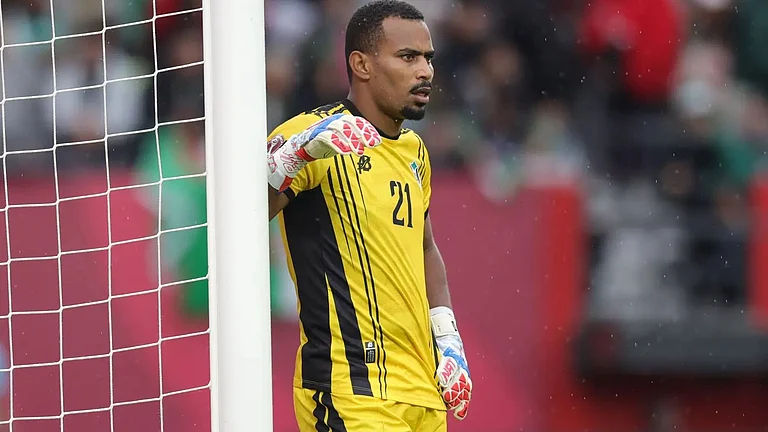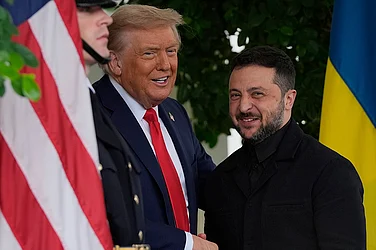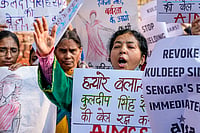The Aam Aadmi Party is currently not on “speaking terms” with most news channels. Which means they’ll answer the phone of guest relations people and tell them that we have decided not to send spokespersons to speak on controversies. The Delhi government, on the other hand, will continue to send press releases and interact with accredited media at 3 pm on working days about issues linked to governance.
Nagendar Sharma, media advisor to the CM, says Arvind Kejriwal laid out the line after a series of “mishaps” with the media. But the “breaking point”, he says, came after Hindi channels “went berserk” accusing AAP leader Kumar Vishwas of having “ashleel sambandh (illicit relations)” with a party volunteer. Vishwas and his wife were summoned by the Delhi Commission for Women following a rather ambiguous Facebook complaint by a woman volunteer. AAP leader Ashish Khetan says “Kumar’s kids had to answer questions in school. When his wife gets dragged into this, the media should question what happened.”
There is certainly a case for Vishwas to feel aggrieved by the tasteless coverage of what was, to begin with, a private matter not amounting to a criminal complaint and for women activists to state whether what began with a Facebook post can be grounds for “investigating” a man and drawing his wife in. But AAP should also ponder over whether the lack of sympathy from the media is also an outcome of their own evolving disdain for the press.
Indeed, some of Kejriwal’s statements suggest that he is rather deliberately making a point about sections of the media being “sold out” and practitioners of “supari journalism”. He has also said publicly that “public trials of media could be considered”. Nagendar Sharma says that the statement was “pulled out of context and Arvind was replying to a suggestion made by a member of the audience whether there should be public trial of media”. He also says that the organisers of the event have been asked to release the footage of the entire conversation. “Employees of media houses have been coming to Arvind with requests to make owners apply the wage board. And AAP has a position on cross-media ownership. But what Arvind said about that was blacked out, the statement about public trials was blown up.”
Would he now concede that Kejriwal made a mistake? “No, if anyone wants a debate on the public trial of media, we are ready. We are also open to a space auditing by an impartial agency of the time some channels give to AAP when they invite them,” says the CM’s media advisor. Still, in what is an embarrassment for AAP, the apex court stayed a circular issued by the information department of his government. The court zeroed in on the contradiction already noted by the media: on the one hand, Kejriwal has challenged defamation cases against him on grounds that they challenge his right to free speech. On the other hand, his government was suggesting action against “any report that damages the reputation of the CM and the government”. The two judges said: “You can’t do both things together—come to the Supreme Court against defamation on the one hand and then take action against the media.”
Still, given that controversies erupt around AAP with regularity, they will take the judicial punch in their stride. The larger question is to understand why AAP is making enemies out of the very people who initially built them up. One of Kejriwal’s closest aides told Outlook: “The Anna movement was promoted by the media, not AAP. We have been blacked out, abused, written off. It was only after opinion polls in mid-January started showing AAP ahead of the BJP in Delhi that we got some positive coverage. Basically, the media has always been against us and will remain so.”
But this is surely exaggerated. If AAP started to get bad press soon after the win in Delhi on February 10, it was because of the mega scenes within the party when Yogendra Yadav and Prashant Bhushan were eventually shown the door. Subsequently, the media could have hardly ignored episodes like the allegedly fake degree of the law minister or a farmer committing suicide in a Delhi rally.
Indeed, the counterpoint could be that AAP has become a visible force also because the media has pretty relentlessly covered it, the good and the bad. And let’s face it, the bad makes for news. Just as covering policy innovations by AAP (and there are a few in their early stages) does not work in the easily digestible news format of talk shows.
Kejriwal is perhaps made of far sterner stuff than his party colleague Ashutosh, who famously wept on live TV. Kejriwal has sharp political instincts that often do not appear to be rational or within any analytical framework. The question now is whether the hostility to the media is part of a larger strategy that emerges from this thought: to hell with the intellectuals and media, our voters are mostly the urban poor who will not leave us for any other party as the others are all sold out to crony capitalism! (And besides we’ve lowered the power bills.)
In that case, AAP would be headed in the direction of a party like the BSP, whose leader Mayawati has never cared for media opinions, stating that it’s anyway under upper-caste hegemony. The problem is that such a stance may not ring true with AAP, which is not a party led by subalterns; its leadership is overwhelmingly made up of professionals and technocrats and many former journalists. Besides, Delhi is not Uttar Pradesh. There is no reason to ignore the opinions of the middle class who have also benefited from cheaper power in the teeming metropolis where they were once at the vanguard of the movement that eventually became AAP.
***
Blow Hot, Blow Cold
Arvind Kejriwal’s tortuous relationship with the media
- August 2011: At end of Anna Hazare’s 13-day fast, Kejriwal salutes media role: “Media weren’t just doing their job. They are now part of the movement.”
- October-November 2012: Mukesh Ambani’s RIL serves legal notices on TV stations, for airing charges of Swiss bank accounts in “live” press conferences by Kejriwal, Bhushan
- January 2014: IBN7 editor Ashutosh resigns from Ambani-owned channel, joins Aam Aadmi Party. Welcomed into AAP by Kejriwal, then Delhi CM
- February 2014: Kejriwal tells a rally in Rohtak: “Yesterday, the editor-in-chief of a TV channel met me and said that his bosses wanted him to cut down on AAP coverage.”
- March 2014: Kejriwal off-air chat with Aaj Tak anchor Punya Prasoon Vajpayee saying he doesn’t want to come off as “anti-corporate” in a TV interview gets leaked
- March 2014: Editors Guild of India slams Kejriwal for his repeated attacks on the media, violating the norms for “decent democratic debate” and for attributing corrupt motives to the media
- May 2014: Ashish Khetan, formerly of Headlines Today and Tehelka, put up as AAP candidate in Lok Sabha elections
- April 2015: As Nitin Gadkari’s defamation suit comes up, Kejriwal challenges constitutional validity of Section 499 and 500, under which criminal defamation can entail two years’ imprisonment
- May 2015: At launch of a web portal, Kejriwal says there is a “conspiracy to finish off AAP” among a “large section of media”; agrees with suggestion that there could be public trials of media
- May 2015: SC grants stay on Delhi government circular asking all officials to report matters of criminal defamation against the media; accuses Kejriwal of doublespeak
























